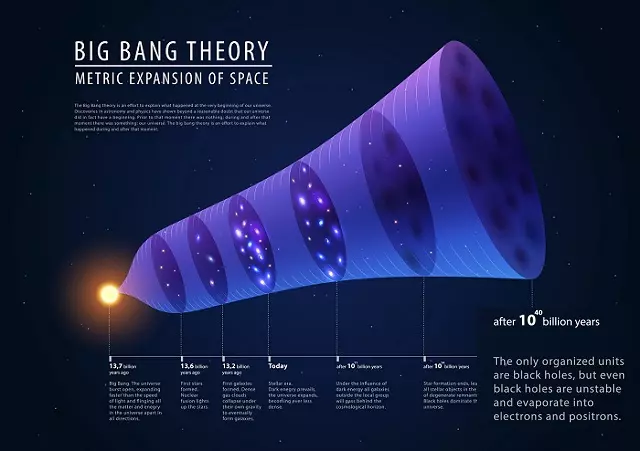[Originally published as Deep time: A necessary hypothetical construct of Darwin’s theory]
Some people think that Darwin’s theory of evolution in 1859 set the stage for the millions-to-billions of years of time necessary for molecules to become men, but historically long-age thinking predated even his birth. The seeds of “deep time” were sown a century earlier as geologists began to question the biblical timeline of 6,000-year history inferred in the biblical record.
Ernst Mayr and other evolutionary scientists fail to mention that the deep time postulated by evolutionists is a necessary hypothetical construct. When reporting the scientific consensus, InterAcademy Panel on International Issues (IAP) (2006) stated:
That it is evidence-based fact derived from observations and experiments in multiple scientific disciplines that the universe has existed for around 13 billion years, and the Earth was formed about 4.5 billion years ago with life appearing at least 2.5 billion years ago.
There is no mention of the progression of thought concerning the history of planet earth, our solar system, or the universe that surrounds us. In times past, the scientific consensus was in agreement with the Bible. The major institutions of higher learning believed that God created the universe and everything therein in six literal 24-hour days, resting from His labors on the seventh day.
Eventually, several scientists began to challenge the biblical young earth position. These doubters date back to astronomer Pierre Laplace (1749–1827), who proposed the nebular hypothesis in his Exposition of the System of the Universe (1796). This theory said that the solar system was once a hot, spinning gas cloud, which over long ages gradually cooled and condensed to form the planets.
This could be considered the very first “just so” story of modern cosmology and the grandfather of the Nebular Hypothesis of star formation and the Core Accretion model of planetary formation that are popular today.
Another scientist in this category was Jean Baptiste Lamarck (1744-1829), the French naturalist and specialist in invertebrates who advocated a theory of biological evolution over long ages in his Philosophy of Zoology (1809). Lamarck developed a theory of heredity based on the use or disuse of certain anatomical characteristics, e.g. that the giraffe developed a longer neck over time in order to gain greater access to leaves atop taller trees. What became known as Lamarckism is the theory of inheritance of acquired traits, which was later debunked as a possible mechanism for Darwinian evolution.
This brings us to Abraham Werner (1749–1817), a mineralogy professor in Germany that believed that most of the crust of the earth had been precipitated chemically or mechanically by a slowly receding global ocean over the course of about a million years. It was an elegantly simple theory, but Werner failed to take into account the fossils in the rocks.
This was a serious mistake since the fossils tell much about when, and how quickly, the sediments were deposited and transformed into stone. Many of the greatest geologists of the 19th century were Werner’s students who were impacted by his idea of a very long history for the earth.
Enter Scottish geologist, physician, naturalist, chemist, and father of modern geology, James Hutton (1726-1797). The American Museum of Natural History calls him the Father of Geology. According to Stephen Baxter in his biography Ages in Chaos: James Hutton and the Discovery of Deep Time, Hutton’s theories of geology and geologic time came to be included in the theories known as plutonism and uniformitarianism.
In the year that James Hutton died, Sir Charles Lyell (1797-1875) was born. He was a British lawyer as well as the foremost geologist of his day. He is best known as the author of Principles of Geology, which popularized James Hutton’s concepts of uniformitarianism—the idea that the earth was shaped solely by slow-moving forces still in operation today.
Lyell was a close and influential friend of Charles Darwin, and he, along with Scottish scientist and mathematician, John Playfair (1748-1819), continued to influence the scientific community away from the Catastrophism that was evidenced by the biblical account of Noah’s flood. His view supported the deep time of uniformitarianism.
Finally, Adam Sedgwick (1785-1873), one of the founders of modern geology (and former teacher of Charles Darwin), further legitimized the concept of deep time. He did this, even though he was a man of devout faith as well as a lifelong opponent of evolutionary theory.
So we can see the progression of thought that began to erode and compromise the biblical truths set forth in the Hebrew Scriptures. The IAP (and other evolutionists) will not tell you that, once upon a time, science believed the biblical record and that the deep time they adhere to today began with an expansion from the biblical model of thousands to millions, and eventually, to billions of years.
by Steven Rowitt, Ph.D.
For more information see: The Great Turning Point: The Church’s Catastrophic Mistake on Geology—Before Darwin. by Terry Mortenson







